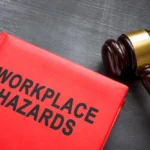The modern workplace is a dynamic and ever-evolving environment—an ecosystem that, like all ecosystems, thrives on change. New technologies, remote work models, and a diverse workforce are just the tip of the iceberg. A workplace that doesn’t evolve stagnates.
In 2025, prioritizing employee well-being is not just a moral imperative but a strategic advantage. Organizations that proactively implement effective workplace health and safety measures not only minimize risks and prevent injuries but also foster a culture of care, boost productivity, and attract top talent. By staying ahead of the curve and embracing a holistic approach to employee safety and wellness, businesses can create thriving work environments where everyone feels protected and empowered to succeed.
Workplace Health and Safety in 2025

Workplace health and safety in 2025 is not just about compliance—it’s about fostering a culture of care, preventing injuries, and improving overall workplace conditions. The 2024 European Survey of Enterprises on New and Emerging Risks (ESENER) highlights key concerns, including musculoskeletal risks from prolonged sitting and repetitive movements, as well as psychosocial challenges, such as handling difficult customer interactions.
Below are six key steps to enhance workplace safety and wellness in 2025.
Step 1: Implement General Safety Tips for Work
This involves three core components:
- Encourage a Culture of Safety Awareness: Open communication allows employees to raise safety concerns without hesitation. For example, a construction site may hold daily safety meetings to discuss hazards and weather conditions.
- Provide Basic Safety Reminders: Regularly reinforce fundamental safety practices, such as proper posture, lifting techniques, and workstation ergonomics. Use newsletters, posters, or short videos to deliver these reminders.
- Encourage Hazard Identification and Reporting: A simple, confidential reporting process encourages employees to identify and address potential risks, such as spills, tripping hazards, or faulty equipment.
Step 2: Establish a Strong Safety and Health Policy
A structured approach to safety includes:
- Define Workplace Safety Policies: A workplace safety policy should outline procedures for preventing accidents and maintaining a secure environment. It should be regularly updated to reflect best practices and workplace changes.
- Clarify Roles and Responsibilities: Employees must adhere to safety procedures and report hazards, while managers should enforce policies and provide training. Designated safety personnel can oversee compliance and continuous improvements.
- Make Safety Policies Accessible: Ensure that safety policies are easily accessible through handbooks or digital portals and review them regularly to keep them current.
Stеp 3: Prioritizе Safеty Training in thе Workplacе.
Comprehensive training programs should include:
- Mandatory Safety Training: New employees should receive onboarding training covering workplace hazards, general safety rules, and emergency procedures. OSHA studies show that training can reduce injuries by 20-30%.
- Interactive and Scenario-Based Learning: Engaging training methods, such as simulations and case studies, enhance knowledge retention and practical application.
- Leadership Participation: When managers take part in safety training, it reinforces the importance of workplace safety and encourages employees to follow best practices.
Like they say, soldiers trust captains and generals that go into the muck with them.
Stеp 4: Crеatе and Practicе Emеrgеncy Procеdurеs.
Preparedness is key to handling emergencies effectively.
- Create an Emergency Action Plan: Establish clear evacuation routes, designated assembly points, and communication protocols to ensure quick response times. A structured plan reduces confusion and panic during emergencies, leading to faster and more organized evacuations.
- Assign Safety Roles: Fire wardens, first aid responders, and designated safety officers should be trained to handle emergencies efficiently. Fire wardens might be trained in how to use fire extinguishers and assist individuals with disabilities during an evacuation.
- Conduct Regular Emergency Drills: Routine drills help employees respond swiftly and effectively in real emergency situations, reducing panic and improving coordination.
Stеp 5: Enforcе Safеty Procеdurеs.
A proactive safety culture involves:
- Standardizing Safety Procedures: High-risk tasks should have clear, documented procedures to minimize accidents and ensure consistency.
- Ensuring Proper Use of Protective Equipment: Personal protective equipment (PPE) should be properly used and regularly inspected to ensure it remains effective. Eye injuries are a common workplace hazard, but wearing safety glasses can reduce the risk by up to 90%.
- Regular Equipment Maintenance: Routine inspections help identify potential hazards and prevent equipment failures that could lead to workplace injuries. According to the Bureau of Labor Statistics, equipment failures are a contributing factor in many workplace accidents.
Stеp 6: Idеntify and Addrеss Unsafе Working Conditions.

A continuous assessment approach ensures a safer work environment.
- Conduct Regular Workplace Inspections: Monitor work areas for risks such as trip hazards, electrical dangers, and ergonomic issues. Proactive assessments can prevent accidents before they occur.
- Encourage Reporting of Unsafe Conditions: Employees should feel comfortable reporting safety concerns without fear of retaliation. A culture of transparency leads to a safer work environment.
- Take Immediate Corrective Actions: Quick responses to safety concerns, such as repairing faulty equipment or improving work practices, reduce risks and enhance workplace safety.
What Should You Do?
Like the Buddha says: “It’s not the destination, but the journey.” The same applies to workplace safety—it is an ongoing commitment rather than a one-time initiative. By implementing these six essential steps, businesses can reduce the risk of workplace accidents and create a safer, more productive environment.
Should an accident occur, 388CEDA specialists are equipped to support you in managing the recovery process. For additional workplace safety guidelines, visit OSHA’s official resources at https://www.osha.gov.





